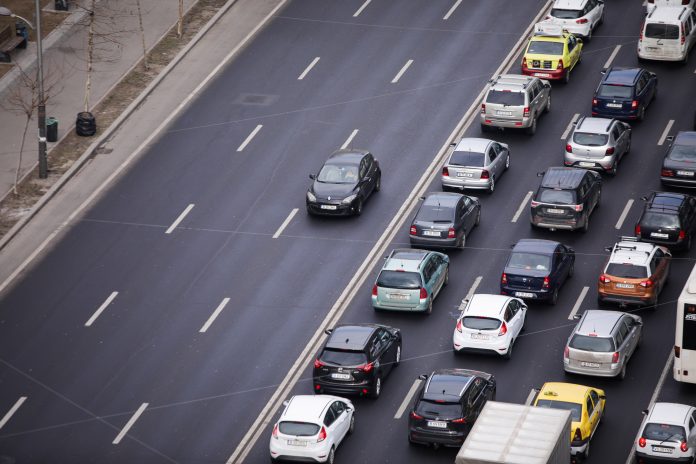Romania’s late Communist leader Nicolae Ceausescu built Bucharest’s underground system, the Metro. It lacks the ornate details or grandeur of the Naples or Moscow undergrounds, because it was built for speed of transit and practicality.
It would have been built earlier, but plans were shelved due to the outbreak of World War II followed by a period of political tensions which ended when communism was installed. It opened in 1979 and handles more than 700,000 passenger journeys a week.
Ceausescu was executed 30 years ago, and Bucharest has seen rapid, urban growth, since then. Yet politicians and city planners have failed residents because they haven’t planned and built a public transport network to meet the city’s current needs.
Compared to other ways of getting around, public transport is seen as the Cinderella option, with low “status” value, but people also need practical solutions and the Metro is the popular choice in the areas it covers. So, let’s have a look at other cities.
Vienna, a key tourist destination has the U-Bahn, with five lines and 104 stations and is used by millions every year. In Hungary, Budapest was the first continental city to open an underground system, and currently has four lines (the last one built in 2014) and about 40 stations including a that runs to the airport. The city prides itself on its good public transport system. https://www.introducingbudapest.com/metro
I’m a Londoner and the Tube as we call it has 11 lines covering 402 kilometres and 270 stations and handles 5 million passenger journeys a day. New lines have been built since I left the city in the 1990s.
Bucharest Metro has four lines and 52 stops. New stations have been built in recent years, but that doesn’t solve the problem. It’s the areas that aren’t covered by the system that is making people’s lives miserable.
Residents have been waiting for years for the East-West Pantelimon-Raul Doamnei and line that goes north along the DN1 to the airport. It’s hard to say whether labour shortages, technical complications or corruption is to blame for the delay in opening the lines.
Traffic jams in these districts are legendary even by Bucharest standards. The lack of efficient public transport has a knock-on effect, and hurts motorists, pedestrians, residents, business, tourists and everyone else.
The quality of life has deteriorated in recent years due to snarled traffic caused in part by a patchy transport system and insufficient public transport. I know some Romanians love cars, big SUVs and black if possible as a status symbol, but how efficient is it? You may drive a Porsche or Land Rover, or another swanky automobile, but how enjoyable is it to sit for hours in traffic day after day, not to mention the pollution?
Smart people have taken to using bicycles, motorbikes and e-scooters. Walking can be quicker than sitting in a traffic jam. But these alternatives don’t meet everyone’s needs. The lack of a decent underground system has become one of Bucharest’s big minuses. People spend literally hours in traffic, which can be stressful and a waste of time, a limited resource. Bucharest has charming parks and museums, so why would city dwellers want to spend their free time in a traffic jam?
If this sounds exaggerated, property that is near a Metro line has a greater value, and when new businesses start or existing companies relocate, they ask: “is it near the Metro?” because that makes the location more accessible and adds value. Parking in Bucharest is a headache as anyone who’s lived here a few months can attest, because of the number of cars coming in and out of the city.
One positive development is the extension of city bus routes from outlying villages such as Cornetu and Voluntari into Bucharest which makes it easier for people to get around, and streamlines the traffic. I’ve heard stories about people who moved to green areas just outside Bucharest in the early 2000s, only to find that their toddlers became teenagers and want public transport, rather than a lift from Mum or Dad to go into the city.
A smart city needs smart options, and that means variety and choice which makes getting around the city quicker and easier for all. It’s nice to see a gleaming car (free of the dust from the Wallachian plains), particularly if it’s passing a brand new Metro station that just opened in Drumul Taberei or Henri Coanda Airport.
Alison Mutler is an experienced British journalist based in Bucharest and has covered Romania, Moldova and occasionally Bulgaria and Hungary for almost 30 years. She first reported from Romania, Bulgaria and Moldova before communism ended, and was In Romania, working for British television station ITV during the 1989 anti-communist revolt. She recently left the Associated Press after 25 years. Her Twitter handle is @AlisoNJMutler


















